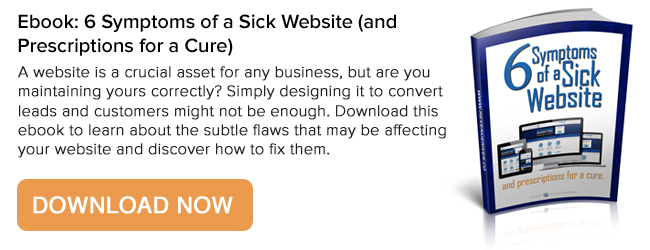When I started my inbound marketing career I was blown away by some of the tools available to marketers. Technology has evolved in such a way that it's possible to market to your target prospects with a greater emphasis on context.
Marketing doesn't need to be scattered and impersonal -- you can now focus on various aspects of an individual's habits and characteristics to create unique marketing messages.
For example, Amazon and Netflix are both personalized to your specific tastes and your browsing history. Things you purchase on Amazon are then reflected in suggested items. Netflix recommends other shows and movies based on what you've already watched.
While not every business has the infrastructure of a company like Amazon or Netflix to create a deep, personalized experience, the good news is that if you have a website, you can create "smart" content with the right set of tools.
Why might this be a good idea? Well, not all website visitors are the same. Smart content on your website allows you to speak to people differently based on where they are in the buyer’s journey.
What Is Smart Content?
Smart Content is content that speaks to different people based on the information you've collected on them. Even the first time someone goes to your website you have some information about them. You know how they got to your site, and you likely know where they are geographically located.
Based on those two criteria alone you can bring up different content. For example, If you are an apparel retailer and someone with an IP address in Minneapolis comes to your site in January, you’d likely want to present different content than you would to someone with an IP address in Miami.
How to Use Smart Content Throughout the Sales Funnel
So let's say you have the marketing tools to integrate smart content. How do you decide who sees what, and at what time? I recommend mapping smart content to the buyer's journey throughout the sales funnel. That way, you can ensure that no matter what stage someone is at the buying process, you'll have a piece of content that's enticing enough for them to convert on.
Attracting a Prospect
The first time a potential customer visits a website, there's a good chance that he or she isn’t ready to make a purchase. They want information from the site, to see what the company has to offer, and to see if its offerings might be a good fit. So what kind of content would benefit a person upon a first visit to a website?
That’s when you should be promoting your blog, display a call-to-action button to sign up for a blog subscription. Create a CTA to follow you on social media channels. You could present an offer at the attract stage such as a survey or quiz that helps your potential customer decide whether or not he or she has a need to be on your website at all.
When you’re trying to attract a customer for the first time, it’s important that you aren’t asking commitment too soon -- your goal is to have them come back to your website.
Top of the Funnel Conversions
Now is when the really cool part of Smart Content begins. The second time someone visits your website, you can display different content. Your potential customer liked you enough to come back, that’s a win in in of itself. Now it’s time really impress him.
He knows what you offer, but needs a deeper understanding, now’s the time to swap the call-to-actions out for ebooks and whitepapers. Use thought leadership and industry-specific information at this stage, rather than company specific. At this stage, Smart Content is a very valuable resource.
Middle of the Funnel Nurturing
You’ve convinced your potential customer and now regular website visitor that you know what you’re talking about. He likes you enough to come back for a third time after having downloaded an ebook or two.
Now it’s time to present some material about what you can do. Swap out call-to-actions from ebooks and whitepapers and offer case studies, webinars, and demonstrations of what your products can do.
Bottom of the Funnel Closing
With a static website, your potential customer would be looking at the same content for the fifth time after they visit it. Not ideal. He would have to navigate your website to find the relevant offers for himself; do you think 100% of your leads are going to have the patience to do this? The likelihood is that you will have lost a lead or two.
But with smart content, your site is dynamic-- your leads are looking at a button that leads them to a free consultation or an opportunity to speak with a sales agent. He’s ready to make the last step in the buyer’s journey, and you’ve made it very convenient for him.
Delighting Existing Customers
Wow, your customer has made it all the way through the buying process and is still coming back to your website. Nice work! Now you know he likes your products or services and potentially wants more.
You can set your Smart Content to offer discounts based on past purchase history, you can offer upgraded services or you can just thank him for being a great customer. Smart Content is just one of the things that a Content Optimization System (COS) can deliver to help broaden your website’s appeal.
Next time you just happen to see the perfect ad at the perfect time, don’t be too surprised. Take a lesson from that ad and think about how you can speak to people on your website based on what they are looking for and where they are in the buying process.
Want to learn more about smart content and how to integrate it onto your website? Check out the Six Symptoms of a Sick Website for a better understanding on how to smarten up your website.

